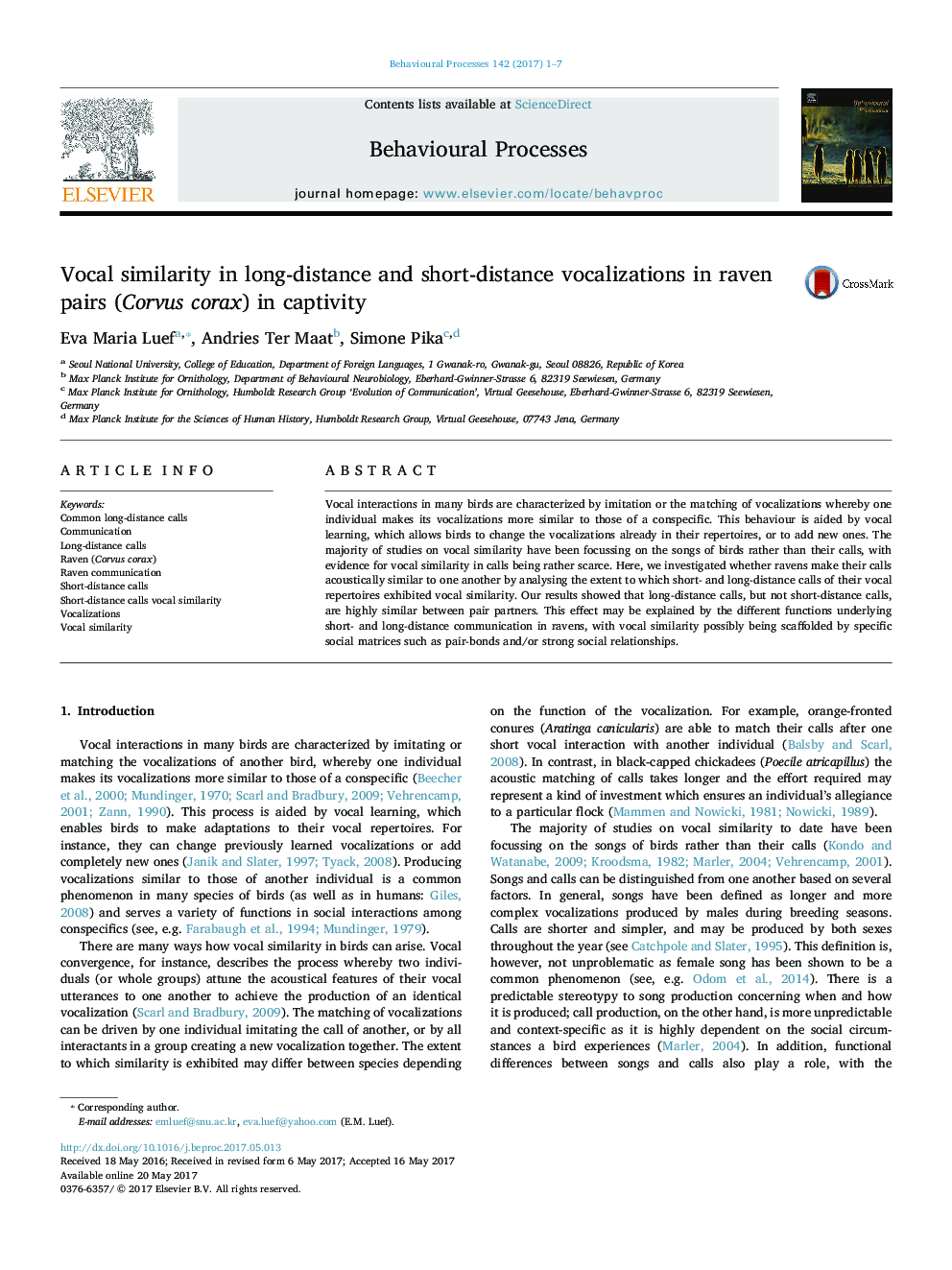| Article ID | Journal | Published Year | Pages | File Type |
|---|---|---|---|---|
| 5539571 | Behavioural Processes | 2017 | 7 Pages |
Abstract
Vocal interactions in many birds are characterized by imitation or the matching of vocalizations whereby one individual makes its vocalizations more similar to those of a conspecific. This behaviour is aided by vocal learning, which allows birds to change the vocalizations already in their repertoires, or to add new ones. The majority of studies on vocal similarity have been focussing on the songs of birds rather than their calls, with evidence for vocal similarity in calls being rather scarce. Here, we investigated whether ravens make their calls acoustically similar to one another by analysing the extent to which short- and long-distance calls of their vocal repertoires exhibited vocal similarity. Our results showed that long-distance calls, but not short-distance calls, are highly similar between pair partners. This effect may be explained by the different functions underlying short- and long-distance communication in ravens, with vocal similarity possibly being scaffolded by specific social matrices such as pair-bonds and/or strong social relationships.
Keywords
Related Topics
Life Sciences
Agricultural and Biological Sciences
Animal Science and Zoology
Authors
Eva Maria Luef, Andries Ter Maat, Simone Pika,
